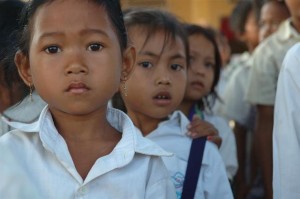聯合國兒童基金會最新數據揭示發展差距,必需以創新方法促進兒童權利
2014-01-30
新报告指出:《儿童权利公约》颁佈25周年在即,儿童福利工作虽已取得显着进展,但要惠及最弱势的儿童,必需集中力量,进一步消除发展差距

|
纽约/香港,2014年1月30日 —— 联合国儿童基金会今天指出,「每一名儿童都重要」,唿吁各界作出更大努力,透过创新方法,分辨及消除发展差距,让全球22亿最弱势的儿童,都能享受应有的权利。
联合国儿童基金会在今天发表的报告中,强调数据对促进儿童福祉、揭示基本服务和保护分配不均的现象,都起着重要作用。
「数据将令拯救及改善数百万儿童,尤其是最受剥削儿童的生命,变成可能。」联合国儿童基金会数据和分析部主任泰莎.沃德罗(Tessa Wardlaw)说,「只有了解哪些儿童最受忽略、哪里有儿童失学、哪里疾病最为猖獗、或者哪里正缺乏基本衞生设施,我们才能取得进一步进展。」
自1989年签署《儿童权利公约》(《公约》)及力求2015年实现《千年发展目标》的进程中,我们已取得重大进展。联合国儿童基金会旗舰刊物《2014年世界儿童状况》显示: |


|
- 如果儿童死亡率仍停留在1990年的水平,约有9,000万儿童在5岁前死亡,但现在他们都得以存活。这很大程度是因为疫苗接种、个人、食水及环境衞生等方面取得进展。
- 自1990年,营养状况得到改善,发育迟缓率已下降37%。
- 即使在最不发达的国家,小学入学率也已上升:1990年,这些国家里只有53%儿童入学;截至2011年,入学率已升至81%。
儘管如此,根据这份《每一名儿童都重要—— 揭示发展差距,促进儿童权利》报告中引述的统计数据,侵犯儿童权利的情况仍然存在:
- 2012年,全球约有660万5岁以下儿童死亡,其中大多数死于可预防的疾病,违反他们生存和发展的基本权利。
- 全球15%儿童是童工,被强迫劳动;他们免受经济剥削的权利受侵犯之余,也失去学习及游戏的权利。
- 全球11%女童在15岁前结婚,她们健康、教育和受保护的权利都受侵害。
数据还揭示了各种差距和不平等,显示进展带来的益处並未平均地惠及所有儿童:
|
- 全球最贫困儿童,由受训助产员迎接出生的机会,较最富裕儿童少近3倍(2.7倍),令他们及其母亲有更大机会患上分娩相关并发症。
- 在尼日尔,所有城市家庭都取得安全的饮用水,但农村里,只有39%家庭获得安全饮用水。
- 在乍得,男女童初中入学比例只是100: 44—— 显示女童无法享受学校所提供的教育、保护及相关服务。

|

|
这份报告指出,「记录每一名儿童,让儿童不再被忽视,亦让满足他们需求,以至为他们倡议权利变成可能。」报告更指,创新的资料收集、分析和传送方法,可按地点、财富、性別、种族或残疾状况等分类资料,令一般平均数可能忽略或漠视的儿童被重新纳入考虑之列。
报告促请投放资源,纠正现时数据调查可能造成的失误。
报告指出,「要纠正现时调查造成的忽略或失误,就必须肯定所有资讯都被全面采纳。不断改良收集及分析数据的方法,以了解更多儿童及其家人权利被剥夺的情况,及提高数据的可用性及可靠性—— 同时研发更多创新的技术。这都需要长远的投资及支持。」
许多对儿童状况的了解,都来自于家庭调查,尤其是多指标类集调查(MICS)。这项由联合国儿童基金会设计及支持,各国统计部执行的调查,就一系列影响儿童生存、发展、权利、生活经验的主题作山数据分析。迄今已有超过100个国家执行这个调查。最近一次多指标类集调查中,更收集及分析了50个国家内超过65万户家庭的资料。
《世界儿童状况》的发表已踏入第30年,透过一致的全球及国家数据统计,为儿童生存环境提供了详细蓝图。联合国儿童基金会在发表这份报告的同时,亦邀请决策者及公众于www.data.unicef.org 浏览和运用相关统计数据,为儿童作出正面改变。
报告指出:「数据本身不能改变世界。但运用数据去辨別需求、支持倡议活动及量度进展,就让『改变』成为可能。最重要的是,决策者运用这些数据作出正面的改变,儿童及社区也能运用这些数据,促请责任者履行义务。」









